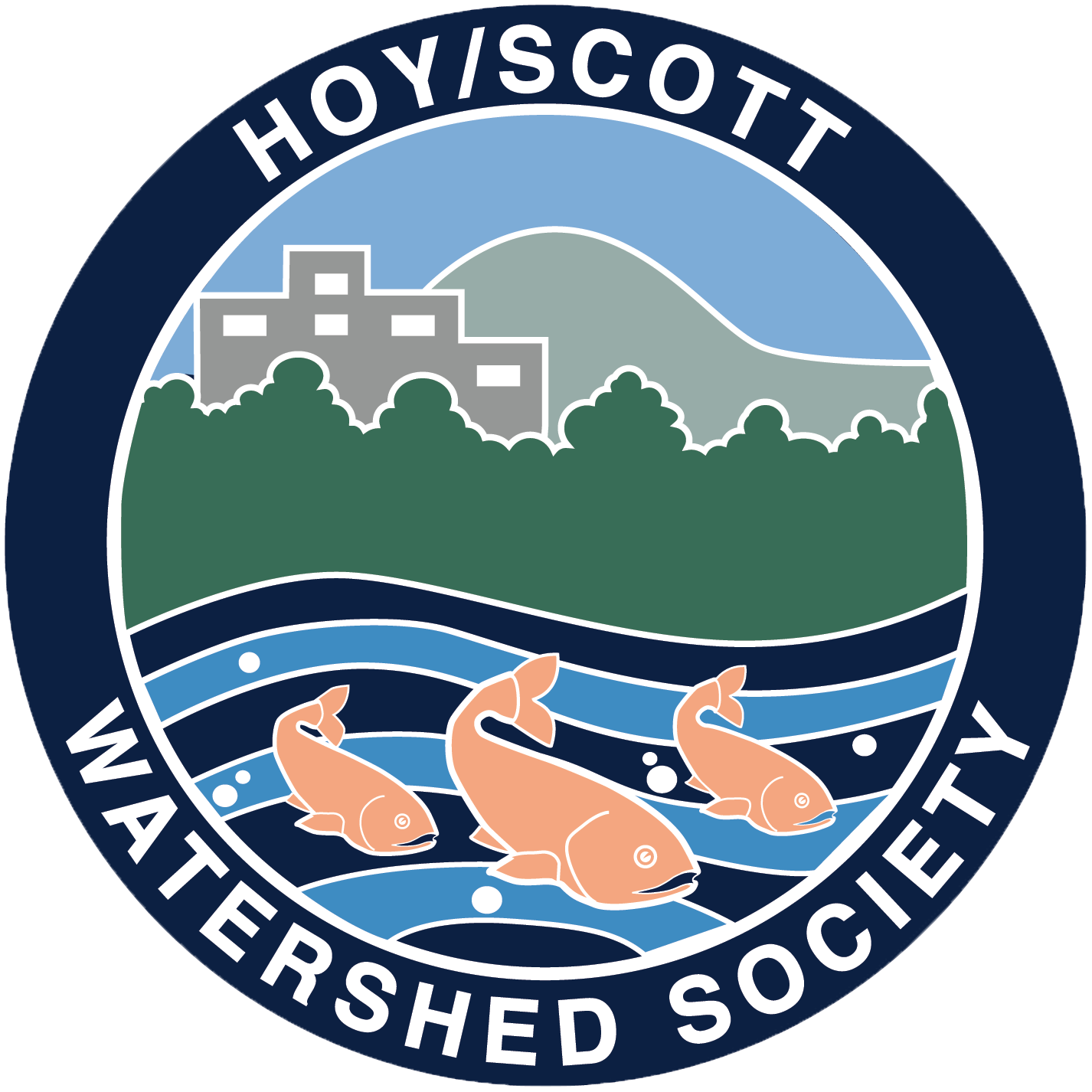A girl releases a Coho smolt into Hoy Creek at Salmon Leave Home at Hoy Creek Hatchery. (HSWS Photo)
Hoy/Scott Watershed Society (HSWS) held its annual Salmon Leave Home event on May 14, and was pleased to return to a public release of the approximately 18-month-old Coho smolts that have been living in the outdoor rearing pond since last May. This was the first time since 2019 that the public was able to assist with the salmon release, due to the pandemic.
The Society moved the event time to the afternoon to give families time to celebrate Mom (it was Mother’s Day). Weather conditions were hot with a high of 32C, but despite that, a steady stream of people came through the Hoy Creek Hatchery area. To the delight of many, wild Coho fry were visible from the footbridge.
The community had the opportunity to carry a bucket of Coho smolts to Hoy Creek for release; take a peek at the six-month-old Coho fry in the hatchery’s Capilano trough room; meet the volunteers and learn about the Society; make a Mother's Day greeting card using leaves; play the Plinko game and get salmon past predators to saltwater safety; sign a Farewell to the Coho Grads of 2023 card; sign a pledge to protect the salmon; and explore Hoy Creek Linear Park.
After a Land Acknowledgement by HSWS president, Kyle Uno, the MLA for Coquitlam-Burke Mountain, Fin Donnelly provided a few words before Kyle presented Keith Kozak, the Society’s first president, with a certificate of appreciation and a gift. Keith spoke about the early years of getting the Society up and running.
The event was supported by the Department of Fisheries and Oceans Canada, with Isaac Nelson overseeing the fish release.
The Society would like to thank all its volunteers for the time spent supporting the event, and the community who came out to help. A special thank you to the event sponsor, the Fish & Wildlife Compensation Program!
Salmon Leave Home 2023 'unofficial' photo: Thanks to our HSWS volunteers who were manning our areas of the event so that some of us could gather for a group photo with our special guests.
Back row, left to right: Tyler Storgaard, Isaac Nelson (DFO), Hannah Tonsaker; Matthew Watts; Henrietta Hamming (wife of the late Chris Hamming, HSWS founder); Robbin Whachell; Keith Kozak (founding member/HSWS first president); and Rodney Lee.
Front row, Fin Donnelly, MLA; and Kyle Uno, current HSWS president.









